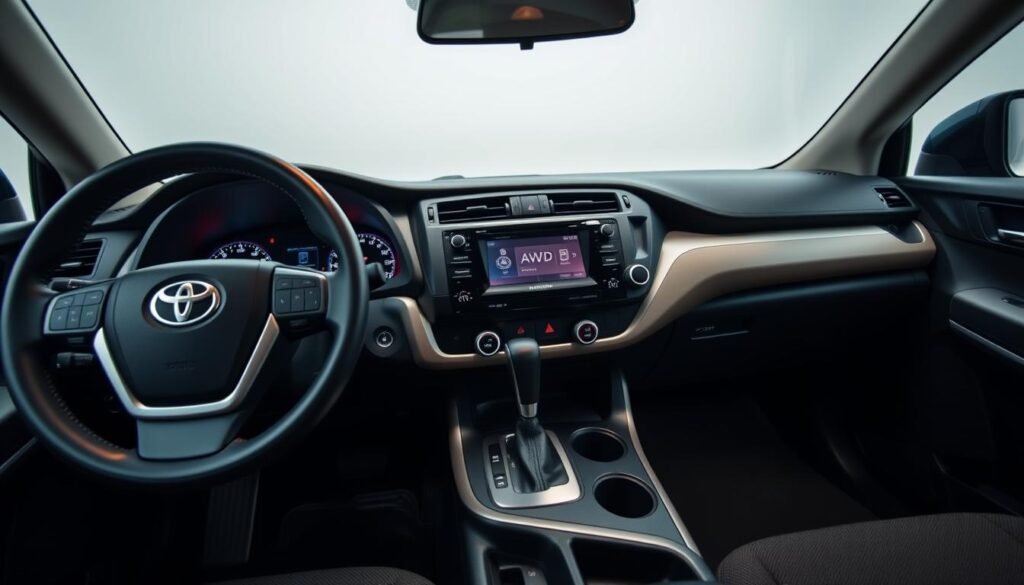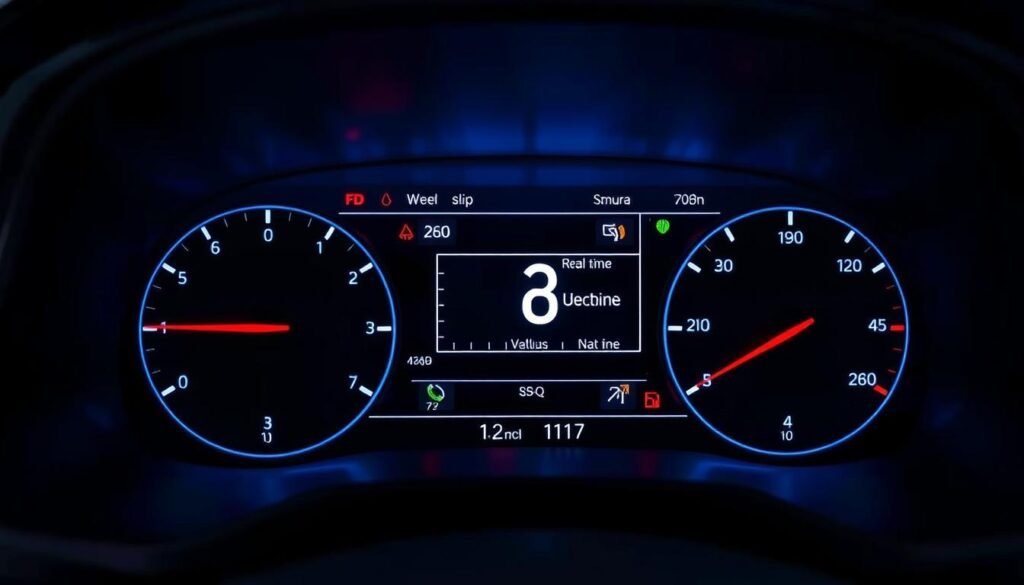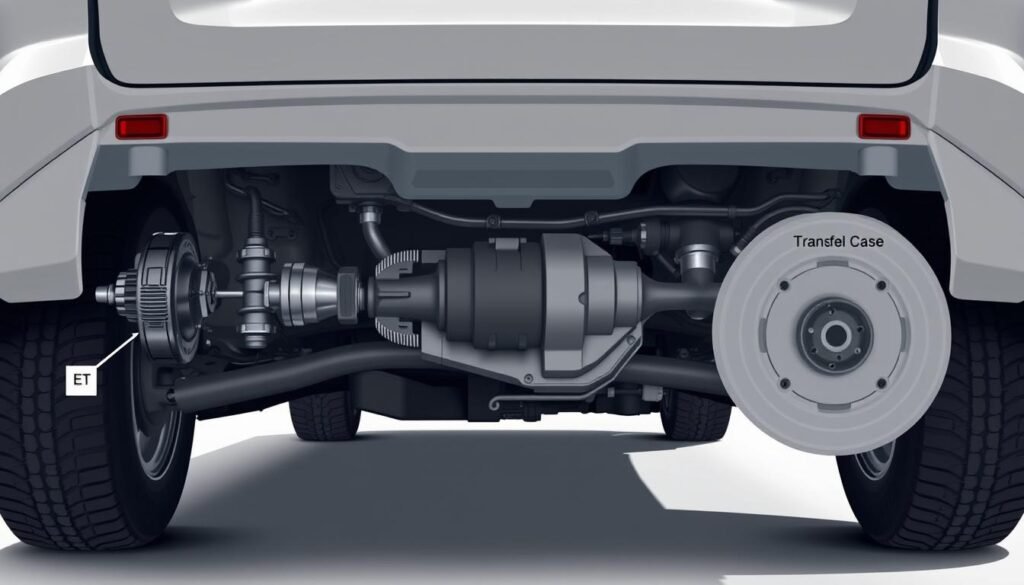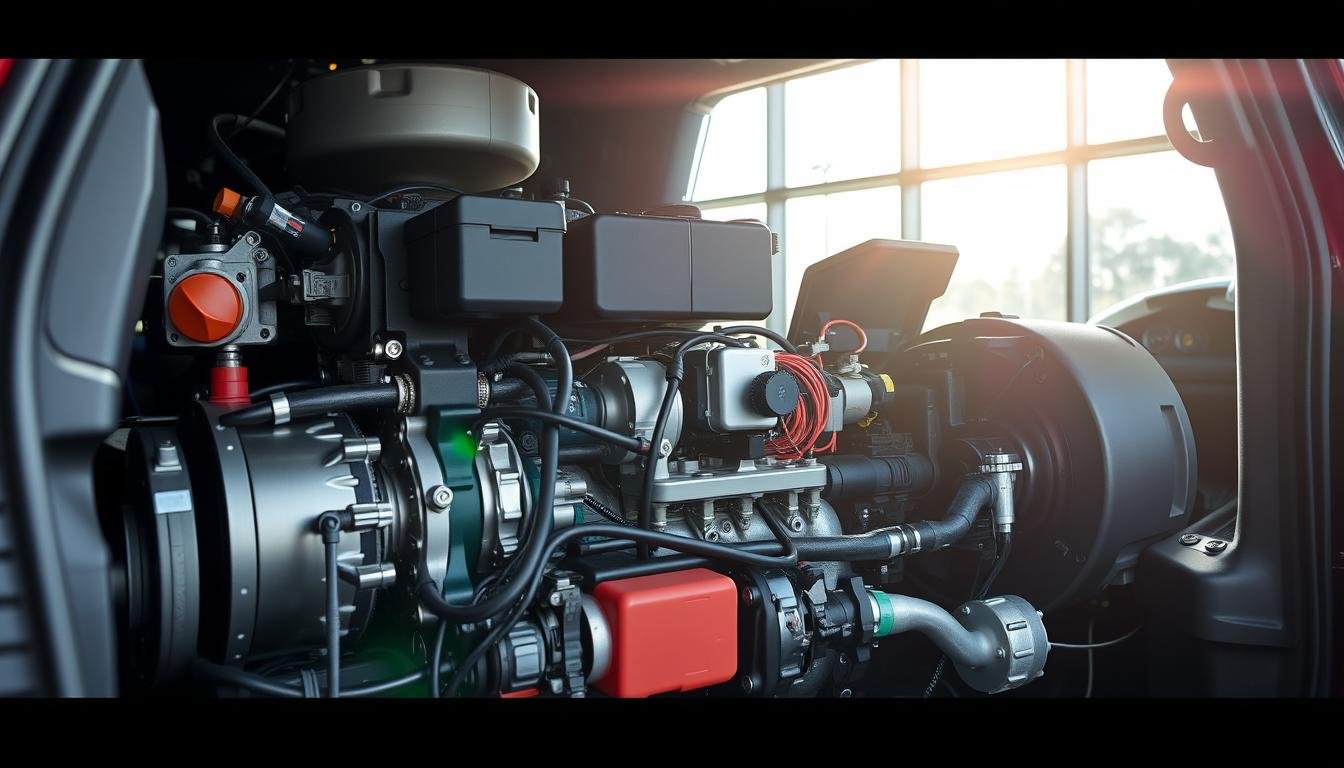Troubleshooting Check AWD System Toyota Highlander
Wondering how to fix the AWD system in your Toyota Highlander? Begin by learning what the system does and spotting signs of trouble.
It’s crucial to keep your All-Wheel Drive (AWD) system in good shape for top car performance.
A properly working AWD system improves grip and stability. This makes your driving safer and more fun.
Here, you’ll figure out how to check your Toyota Highlander’s AWD system. We’ll walk you through basic checks, the tools you need, and signs of AWD problems.
By following these instructions, you’ll be able to find issues quickly and keep your car running well.
Now, let’s get into how to troubleshoot your Toyota Highlander’s AWD system.
What is The Toyota Highlander AWD System?
The Toyota Highlander has an advanced All-Wheel Drive (AWD) system. It improves grip and control in different driving situations.
Knowing how it works is key for any car owner. This info is super helpful for routine checks and the toyota highlander awd system check.
With this knowledge, you’re set for the toyota highlander awd system inspection.
What is All-Wheel Drive?
All-Wheel Drive sends power to all four wheels at once. It’s better than two-wheel drive, boosting traction on wet or dirty roads.
This lets the Toyota Highlander drive smoother and safer, even in bad weather. The system works by itself, changing based on the road.
Components of The AWD System
The AWD system includes important parts that help get power to the wheels. These major parts are:
- Transfer Case: Sends power to both front and rear axles for better traction.
- Driveshaft: Connects the transfer case to the wheels, moving power to both axles.
- Differentials: Help wheels turn at different speeds, helping keep the car stable and easy to control.
Common AWD System Issues
Fixing the Toyota Highlander AWD system means knowing some common problems that might pop up.
It’s really important to spot these issues early. This way, you can fix them fast and save on repair costs.
Signs of Trouble in Your AWD System
Watch for these signs that your AWD system might be in trouble:
- Unusual noises during operation, such as grinding, clunking, or whirring sounds.
- Dashboard warning lights that illuminate, especially those related to the AWD system.
- Difficulty in handling or a noticeable change in your vehicle’s traction.
- Delayed response during acceleration or reduced power when navigating hills.
Diagnosing AWD Problems in Toyota Highlander
If you think there’s an issue with your AWD system, take a step-by-step approach. First off, you should:
- Check the dashboard for any illuminated warning lights.
- Connect an OBD-II scanner to retrieve trouble codes, which will help pinpoint specific problems.
- Inspect for any visible damage to components like the transfer case, driveshaft, or differentials.
- Examine your vehicle’s fluid levels and conditions, which may impact system performance.

How To Check AWD System on Toyota Highlander
Knowing how to check the AWD system on your Toyota Highlander is key for its best performance. You can start with simple checks that are both quick and helpful.
They pave the way for deeper checks later on. These steps help spot any problems and keep your vehicle in top shape.
Initial Checks You Can Perform
- Check fluid levels in the transfer case and differential to ensure they are within recommended ranges.
- Visually inspect for any fluid leaks under the vehicle.
- Inspect the tire pressure, making sure all tires match the specifications indicated in the owner’s manual.
- Listen for unusual noises during operation, which can indicate deeper problems.
- Test the AWD system by engaging it in different driving conditions—note any irregularities in handling or power distribution.
Tools Required For Inspection
Gathering the right tools can make checking the AWD system on your Toyota Highlander easier. You will need:
- Jack and jack stands for safely elevating the vehicle.
- A wrench set for manipulating screws and bolts.
- Fluid containers for catching any leakage during inspections.
- OBD scanner to read any diagnostic trouble codes from the vehicle’s computer.

Troubleshooting Check AWD System Toyota Highlander
Dashboard warning lights are crucial for knowing the health of your Toyota Highlander’s AWD system.
Recognizing these signals early can help avoid worse problems later. It’s especially important to know what the ABS and AWD warning lights mean.
Ignoring these lights can lead to bigger issues, so it’s key to understand their warnings.
Knowing Dashboard Warnings
When your dashboard lights up, it’s telling you something might be wrong. The main lights to watch for the AWD system are:
- ABS Warning Light: This means there’s a problem with the brake system, which can affect your car’s grip.
- AWD Warning Light: This light suggests there’s an issue with the all-wheel drive system, possibly hurting your car’s performance.
- Check Engine Light: This could point to an AWD system issue, especially if it’s an electronic problem.
Utilizing Onboard Diagnostics (OBD)
To do a thorough check, use the car’s onboard diagnostics (OBD). The OBD system can tell you exactly what’s wrong by giving you error codes. Here’s how to use it:
- Connect the OBD scanner to your car’s diagnostic port.
- Switch the ignition on without starting the car.
- Go to the diagnostics menu and see the error codes.
- Look up the meanings of these codes in your car’s manual or online.
- Pay special attention to codes about the AWD system for further checks.
Knowing how to use these diagnostics tools is important. It helps you keep your Toyota Highlander’s AWD system in good shape, stopping minor issues from becoming big, expensive ones.

Inspecting The AWD System Components
In checking a Toyota Highlander’s AWD system, focus on key parts crucial to your vehicle’s drive system.
Checking these parts often can help catch issues early. This ensures your Toyota Highlander runs smoothly and lasts longer.
Key Components To Examine
- Transfer Case
- Driveshaft
- Differentials
- CV Joints
- Axles
Visual Inspection Tips
Here are tips for a visual check:
- Look for leaks by the transfer case and differentials.
- Check the driveshaft for bends or cracks.
- See if CV joints have unusual wear or are missing grease.
- Note any weird vibrations while driving, which could mean issues in the driveshaft or axles.
- Make sure everything is tightly fixed and free from too much rust or corrosion.
Doing a proper inspection of the Toyota Highlander AWD system can save you time and cost later.
Careful checks will help in fixing any issues and maintaining your vehicle’s condition.

Toyota Highlander AWD System Maintenance
Keeping your Toyota Highlander’s all-wheel drive (AWD) system in good shape is crucial. For the best performance and a longer life, there are key steps you should follow.
We will look at important maintenance tips and why checking the AWD system’s fluids is vital.
Regular Maintenance Practices
To keep your Toyota Highlander AWD system running well, follow these tips:
- Schedule routine inspections according to the vehicle’s maintenance schedule.
- Change transfer case fluid as recommended, typically every 30,000 to 60,000 miles.
- Replace filters as necessary to maintain clean fluid flow.
- Inspect the condition of the driveshaft and differential components regularly.
- Ensure tire rotation and pressure checks are kept consistent for balanced traction.
Importance of Fluid Checks
The fluids in your AWD system are key to its performance. It’s important to check them regularly to keep them at the right levels and clean.
If the fluids are low or dirty, the system might not work right, which could cause problems.
Below is a guide to the fluids you need to check and why they are important:
| Fluid Type | Recommended Change Interval | Importance |
|---|---|---|
| Transfer Case Fluid | 30,000 – 60,000 miles | Ensures proper lubrication and cooling of components. |
| Differential Fluid | 30,000 – 60,000 miles | Maintains smooth operation and prevents wear. |
| Brake Fluid | Every 2 years | Essential for responsive braking and safety. |
By keeping up with maintenance and fluid checks, you can make your Toyota Highlander AWD system last longer and work better.
Diagnosing Electrical Issues in The AWD System
The Toyota Highlander’s AWD system depends a lot on electrical parts. Issues with wires or broken sensors can mess up how it works.
It’s crucial to know about these electrical problems to fix your Toyota Highlander AWD system. Look for signs it’s not working right and run tests on the electrical stuff.
Common Electrical Problems
Most electrical problems in the AWD system come from certain areas:
- Faulty Sensors: These sensors keep tabs on different things. If they’re not working right, the AWD system gets wrong info.
- Wiring Issues: Bad or worn-out wires can cut power or mess up messages between parts.
- Corrosion: Rusty connectors can block electricity, making the AWD act up.
- Faulty Control Module: This part controls the AWD system. If it’s broken, the system can act strangely.
Testing Electrical Connections
Checking the electrical stuff is key to fixing the Toyota Highlander AWD system. Here’s how to make sure it’s all good:
- Get the Right Tools: You’ll need a multimeter to test the electrical stuff.
- Look at Connections: Check all connections and wires for damage.
- Set Multimeter: Adjust the multimeter for your car’s specs to check voltage.
- Test Connections: Use it on different parts of the AWD system to check for the correct voltage.
- Review Results: Compare your findings to what they should be to spot any issues.
Learning to troubleshoot the Toyota Highlander AWD system will help you find and fix electrical issues. Keeping the system well-maintained means better reliability and performance.
Learning Toyota Highlander AWD System Warning Signs
Knowing the warning signs of your Toyota Highlander’s AWD system is key. Some signs might not be obvious right away. Spotting these early can help avoid bigger problems.
Behavioral Indicators of AWD Issues
Watch how your car acts. Here are signs your AWD might not be working right:
- Pulling to one side during driving
- Unusual or excessive vibrations
- Noticeable whining or grinding sounds from the drivetrain
- Loss of traction, especially in wet or slippery conditions
- Inconsistent power distribution between the wheels
What Each Warning Light Means
Your Toyota Highlander uses dashboard lights to talk about AWD problems. Knowing what they mean helps you react correctly:
| Warning Light | Meaning |
|---|---|
| AWD Indicator | AWD system is engaged or functioning normally. |
| AWD Malfunction Light | Possible issue with the AWD system; further inspection needed. |
| Traction Control Light | Traction control is active; vehicle may have loss of traction. |
| Check Engine Light | General engine issue; could also relate to the AWD system. |
How To Test AWD System on Toyota Highlander
To test the all-wheel drive (AWD) system on your Toyota Highlander, you’ll need to follow some steps.
It’s important to know how to check the AWD system. This ensures your car works well, especially on tough roads. Here’s a guide to help you do a detailed check.
Step-by-Step Testing Process
First, gather tools like an OBD-II scanner, safety gear, and gloves. Here are the steps to test your AWD system:
- Start by checking the car for any leaks or damage to the AWD parts.
- Then, plug your scanner into the car’s diagnostic port and switch on the ignition, but don’t start the car.
- Use the scanner to find any trouble codes. Look closely for codes that mention the AWD system.
- Drive the car in different conditions. See how the AWD system responds when you turn sharply and speed up.
- While driving in varied situations, listen for odd sounds or feel for vibrations to check the AWD’s functioning.
Interpreting Test Results
After testing, look at the scanner results and think about what you noticed while driving. Key things to check are:
- Any error codes about the drivetrain parts.
- How the car managed during your test drive.
- The level and condition of the AWD fluids after a visual check.
Knowing these points helps you decide on further repairs or when to get a professional check. Compromise your test results is vital to keep your car’s AWD system in top shape.
Toyota Highlander AWD System Tips and Tricks
To keep your Toyota Highlander’s AWD system working well, you need to be proactive.
Using the right tips and practices in your routine helps improve its performance. It also lowers the chance of problems.
Best Practices For Long-term Performance
To make your AWD system last longer, follow these good habits:
- Regularly check and replace the differential fluid to ensure smooth operation.
- Monitor tire pressure and alignments consistently to promote even wear and optimal grip.
- Incorporate routine visual inspections for leaks or damage around the drivetrain components.
- Attend to dashboard alerts and warning lights promptly to prevent minor issues from escalating.
How To Enhance AWD Efficiency
Improving your Toyota Highlander’s AWD efficiency means better fuel economy and less wear on parts. Here are some tips:
- Avoid aggressive driving behaviors, which can overwork the AWD system and decrease longevity.
- Keep your vehicle clean, particularly undercarriage areas, to prevent corrosion and mechanical failure.
- Engage in regular toyota highlander awd system maintenance, focusing on timely repairs when issues arise.
- Utilize seasonal tires if you live in areas with significant weather changes, enhancing traction and control.
Conclusion
Making sure your Toyota Highlander’s AWD system works well is key for safety and how well it drives. Keep up with regular checks.
This will help you spot any problems early. It helps avoid big repair bills and keeps your AWD system working its best.
The tips shared here give you the tools to spot and fix issues with your AWD system. You can check things yourself and understand what the dashboard warnings mean.
Taking action early keeps your Highlander running smoothly. So, always keep an eye on your AWD system.
To wrap up, knowing how your car works and how to troubleshoot the AWD system can save you both time and money.
Stay attentive and take good care of your car. Then, you can look forward to a safe and smooth drive for many years.
FAQs
How can I check the AWD system on my Toyota Highlander?
Start by looking at the AWD system parts like the transfer case and driveshaft. Check the fluid levels and look for any leaks. An OBD scanner can spot trouble codes for the AWD system.
What are the common warning signs of AWD system issues?
Watch for odd noises, dashboard lights, the car pulling to one side, and less traction. Catching these signs early can stop more damage.
What tools do I need for inspecting the AWD system?
You’ll need a jack, wrench set, and an OBD scanner. These tools let you check the parts and read the car’s diagnostic codes.
How often should I perform maintenance on my AWD system?
Do maintenance every 30,000 to 60,000 miles. This should include changing fluids and filters. Regular checks also keep the AWD system working longer.
What should I do if I see a dashboard warning light related to the AWD system?
Seeing a dashboard light means you should scan for trouble codes with an OBD scanner. These codes explain what’s wrong. Look at the owner’s manual or get professional help if you need it.
How can I test the electrical components of the AWD system?
Check the electric parts with a multimeter. Look for voltage problems that could mean bad wiring or sensor issues.
What are the key components to inspect in the AWD system?
Examine the transfer case, driveshaft, differentials, and associated wiring closely. Regular checks help catch wear or damage early.







